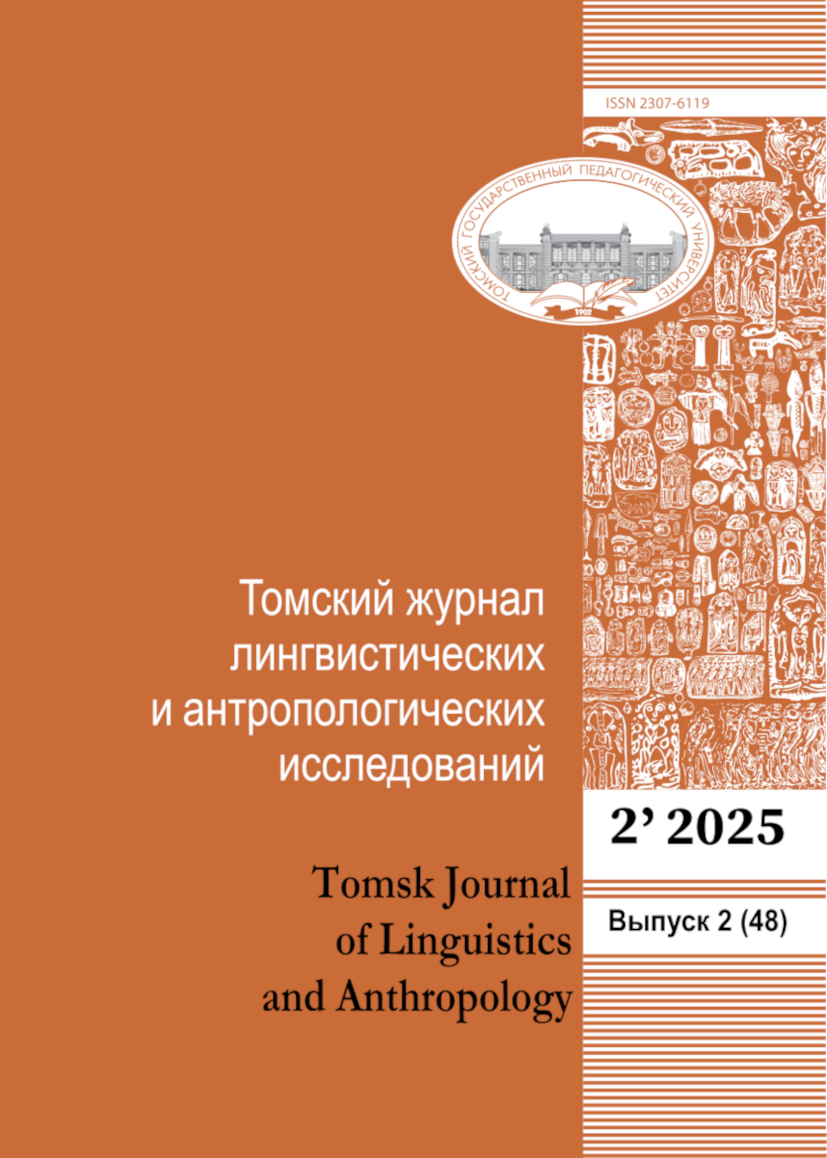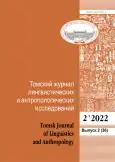DISTRIBUTION OF COMPLEMENTIZERS IN THE URMI VARIETIES OF URMIYA
- Authors: Zabelina E.A.1
-
Affiliations:
- Institute for Linguistic Studies, Russian Academy of Sciences
- Issue: No 2 (2022)
- Pages: 22-33
- Section: LINGUISTICS
- URL: https://bakhtiniada.ru/2307-6119/article/view/270108
- DOI: https://doi.org/10.23951/2307-6119-2022-2-22-33
- ID: 270108
Cite item
Full Text
Abstract
About the authors
Elizaveta Aleksandrovna Zabelina
Institute for Linguistic Studies, Russian Academy of Sciences
Email: windmill161@gmail.com
9 Tuchkov lane, St. Petersburg, Russia, 199053
References
- Boye, Kasper, & Petar Kehayov (eds.). 2016. Complementizer semantics in European languages. De Gruyter Mouton.
- Chappell, Hilary. 2008. Variation in the grammaticalization of complementizers from verba dicendi in Sinitic languages. Linguistic Typology. 12. 10.1515/LITY.2008.032.
- Coghill, Eleanor. 1999. The Verbal system of North Eastern Neo-Aramaic, Dissertation for the M.Phil. Degree, Faculty of Oriental Studies, University of Cambridge.
- Cristofaro, Sonia. 2003. Subordination. Cambridge: Cambridge University Press.
- Cristofaro, Sonia. 2014. Complementation hierarchies and the development of complement constructions. Paper presented at the workshop ‘Clausal complementation and (non)factivity’, DGfS, Marburg (5 March 2014).
- Givó n, Thomas. 1980. The binding hierarchy and the typology of complements. Studies in language. V. 4. № 3.
- Dik, Simon C. & Kees Hengeveld. 1991. The hierarchical structure of the clause and the typology of perception-verb complements. Linguistics, 29 (2), 231–259. De Gruyter Mouton.
- Dixon, Robert M. W. & Aleksandra Y. Aikhenvald (eds.). 2006. Complementation. Oxford University Press.
- Heine, Bernd & Tania Kuteva. 2002. World lexicon of grammaticalization. Cambridge: Cambridge University Press.
- Karttunen, Lauri. 1971. Some Observations on Factivity. Pap. Linguist. 4, 55–69.
- Khan, Geoffrey. 2016a. The Neo-Aramaic Dialect of the Assyrian Christians of Urmi. Vol 1. Grammar: phonology and morphology. Brill, Leiden.
- Khan, Geoffrey. 2016b. The Neo-Aramaic Dialect of the Assyrian Christians of Urmi. Vol 2. Grammar: syntax. Brill, Leiden.
- Khan, Geoffrey. 2016d. The Neo-Aramaic Dialect of the Assyrian Christians of Urmi. Vol 4. Texts. Brill, Leiden.
- König, Ekkehard. 2015. Manner deixis as source of grammatical markers in Indo-European languages. In Carlotta Viti (ed.), Perspectives on historical syntax, 33–60. Amsterdam: John Benjamins.
- Lehmann, Christian. 2019. Christian Lehmann’s personal website. URL : https://www.christianlehmann.eu/ling/lg_system/sem/index.html?https://www.christianlehmann.eu/ling/lg_system/sem/proposition_state_of_affairs.html
- Lyavdansky, Alexey et al. Christian Urmi Corpus. (Available online at: neo-aramaic.web-corpora.net/urmi_corpus/search).
- Matras, Yaron. 1998. Utterance modifiers and universals of grammatical borrowing. Linguistics, 36, 281–331.
- Meyerhoff, Miriam. 2002. All the same? The emergence of complementizers in Bislama. In T. Güldemann, and M. von Roncador (eds), Reported Discourse. A meeting ground for different linguistic domains. Amsterdam / Philadelphia: John Benjamins, 341–363.
- Noonan, Michael. Complementation. In Shopen T. (ed.). Language Typology and Syntactic Description. V. 2: Complex Constructions. Cambridge: Cambridge University Press, 2007. P. 52–151.
- Schmidtke-Bode, Karsten. 2014. Complement clauses and complementation systems: A cross-linguistic study of grammatical organization. Doctoral dissertation, Thüringer Universitäts-und Landesbibliothek Jena.
- Staum, Laura. 2005. When Stylistic and Social Effects Fail to Converge: a variation study of complementizer choice. Ms., Stanford University.
- Thomason, Sarah G. & Terrence Kaufman. 1988. Language contact, creolization and genetic linguistics. Berkeley University of California Press.
- Treis, Yvonne & Martine Vanhove (eds.). 2017. Similative and equative constructions: A cross-linguistic perspective (Vol. 117). John Benjamins.
- Zabelina, Elizaveta. 2017. Morfosintaksis sentencial’nyh aktantov pri predikate ‘xotet’’ v urmijskom novoaramejskom [Morphosyntax of complements of the verb ‘want’ in Urmi Neo-Aramaic]. In Zabelina, Logvinova (eds.). Semnadtsataya Konferentsiya po tipologii i grammatike dlya molodykh issledovateley. Tezisy dokladov [17th Conference on Typology and Grammar for Young Scholars. Abstracts] (Saint Petersburg, 19–21 November 2020). St. Petersburg: Institute for Linguistic Studies, RAS. 42–45.
Supplementary files







